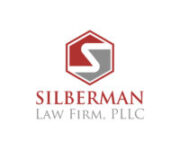
One of the primary benefits of creating a corporation or LLC is to shield shareholders or owners from the risk of being sued for a business decision that goes poorly. What happens, though, when the entity is a sham being used to perpetrate fraud? How are officers, directors, members, and managers held accountable for their deceptive actions? Texas law has a long history when it comes to determining liability for fraudulent corporate shareholders and their affiliates. The original term for this action, “Lifting the Corporate Veil,” has morphed into the more aggressive phrase, “Piercing the Corporate Veil” with a goal to provide “justice and equity” for individuals who have been harmed by owners attempting to hide behind a sham corporation or limited liability company.
The default rule in Texas is “No veil-piercing,” which preserves the separation of the corporate entity and individual owners. Only when corporations are used as alter-egos or shams for fraudulent activities is veil-piercing feasible. Texas courts continue to grapple with how best to define and pursue this type of fraud, and the laws continue to evolve as result of those efforts.
Common Law and the Castleberry Case
In Texas, attempts to break beyond the shield of protection that a corporation provides its shareholders and affiliates can be traced at least as far back as the case of Castleberry v. Branscum, 721 S.W. 2d 270 (Tex. 1986). In Castleberry, the jury found that corporate officers ran the business as a “sham to perpetrate fraud” against the plaintiff. Despite previously held notions that a corporation shields its officers, shareholders, stockholders, and other affiliates from liability, Branscum and Byboth, the officers guilty of fraud against Castleberry, were held personally liable for a promissory note made by the corporate entity. Ultimately, the Texas Supreme Court upheld the original verdict based on principles of equity, arguing for a “flexible fact-specific approach...” when fraud is involved. Id. at 272-73 (quoting Fletcher, Cyclopedia Corporations § 5 at 40 (1942).
The equitable doctrine of piercing the corporate veil was later codified into Texas law. Subsection (a) of Section 21.223 of the Texas Business Organizations Code starts with the common law concept that no veil-piercing is the default.
(a) A holder of shares, an owner of any beneficial interest in shares, or a subscriber for shares whose subscription has been accepted, or any affiliate of such a holder, owner, or subscriber or of the corporation, may not be held liable to the corporation or its obligees with respect to:
(1) the shares, other than the obligation to pay to the corporation the full amount of consideration, fixed in compliance with Sections 21.157-21.162, for which the shares were or are to be issued;
(2) any contractual obligation of the corporation or any matter relating to or arising from the obligation on the basis that the holder, beneficial owner, subscriber, or affiliate is or was the alter ego of the corporation or on the basis of actual or constructive fraud, a sham to perpetrate a fraud, or other similar theory; or
(3) any obligation of the corporation on the basis of the failure of the corporation to observe any corporate formality, including the failure to:
(A) comply with this code or the certificate of formation or bylaws of the corporation; or
(B) observe any requirement prescribed by this code or the certificate of formation or bylaws of the corporation for acts to be taken by the corporation or its directors or shareholders.
Importantly, after initially stating that no veil-piercing is the default, the statute goes on to state in subsection (b) that veil-piercing is in fact allowed in cases where actual fraud occurs “for the direct personal benefit” of the defendant:
(b) Subsection (a)(2) does not prevent or limit the liability of a holder, beneficial owner, subscriber, or affiliate if the obligee demonstrates that the holder, beneficial owner, subscriber, or affiliate caused the corporation to be used for the purpose of perpetrating and did perpetrate an actual fraud on the obligee primarily for the direct personal benefit of the holder, beneficial owner, subscriber, or affiliate.
According to Castleberry, the definition of “actual fraud” is “dishonesty of purpose or intent to deceive,” including all of the elements of fraud. The Legislature and Texas Supreme Court still have not provided a formal definition of these terms. However, recent opinions from the court of appeals have accepted the Castleberry definition.
The laws about piercing the corporate veil in Texas continue to evolve. Many corporations are formed to protect assets, but actions that may be fraudulent put that corporation and its shareholders at risk. Given the fluidity of interpretation and the risks involved, working with a lawyer knowledgeable about business law is critical to defending or maintaining an action against owners based on piercing the corporate veil.
All information provided on Silblawfirm.com (hereinafter "website") is provided for informational purposes only, and is not intended to be used for legal advice. Users of this website should not take any actions or refrain from taking any actions based upon content or information on this website. Users of this site should contact a licensed Texas attorney for a full and complete review of their legal issues.
